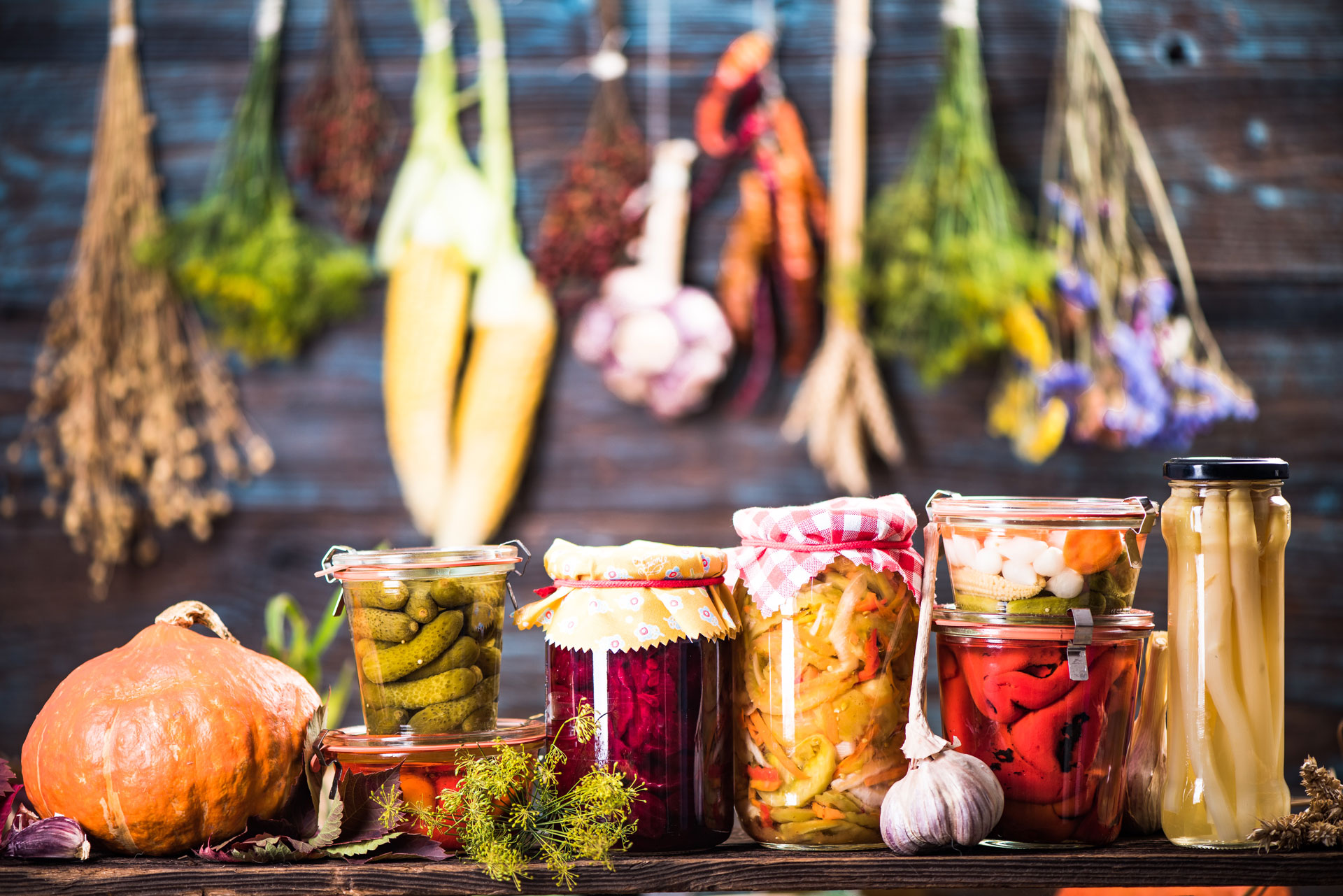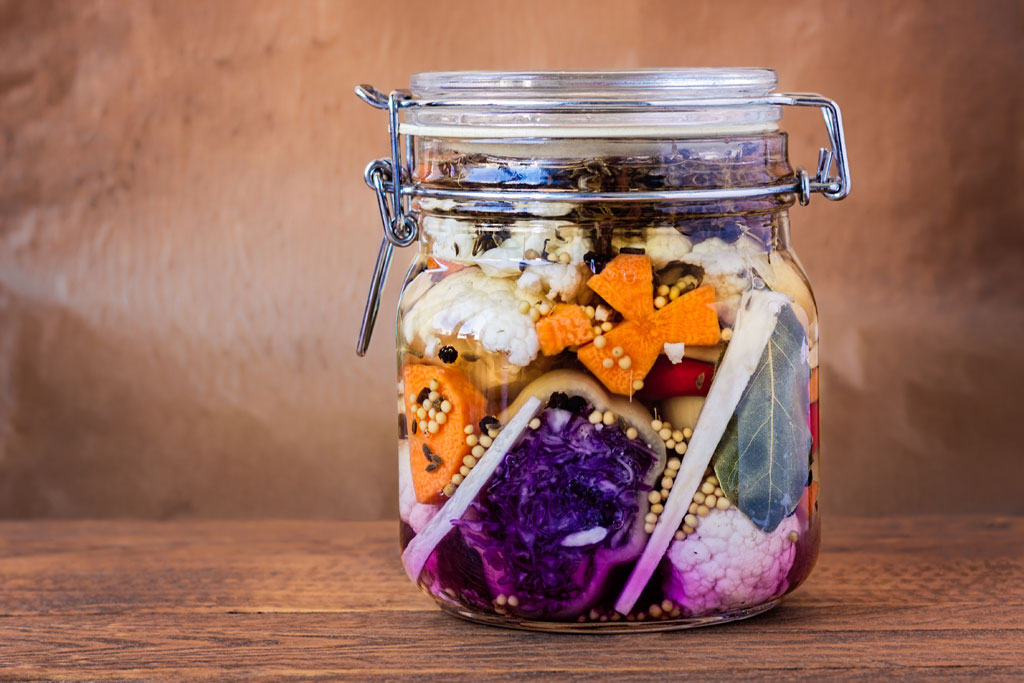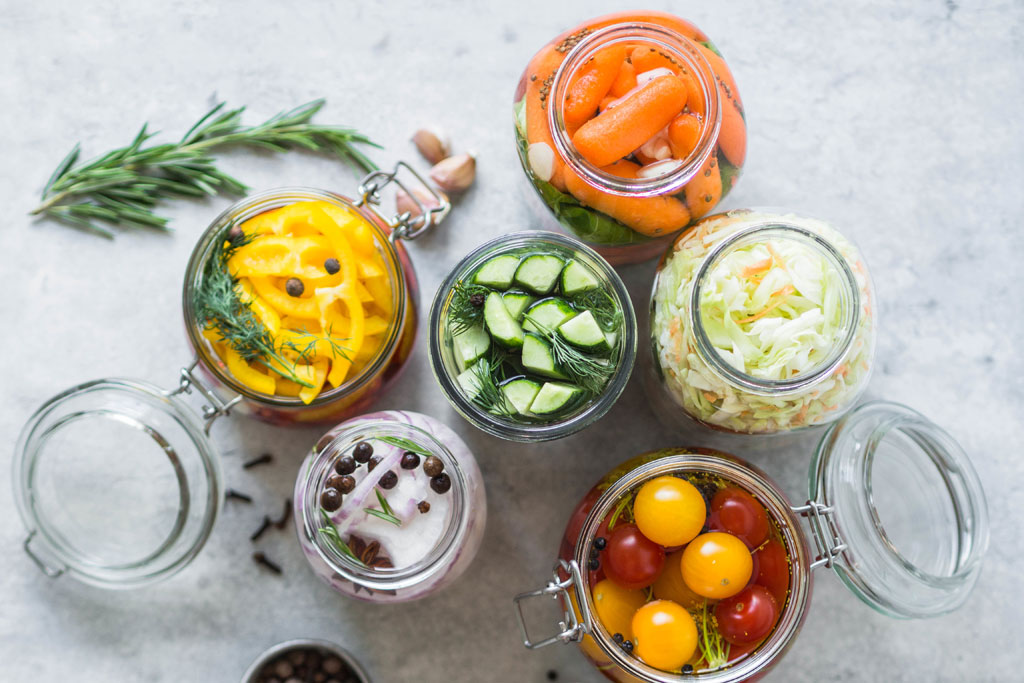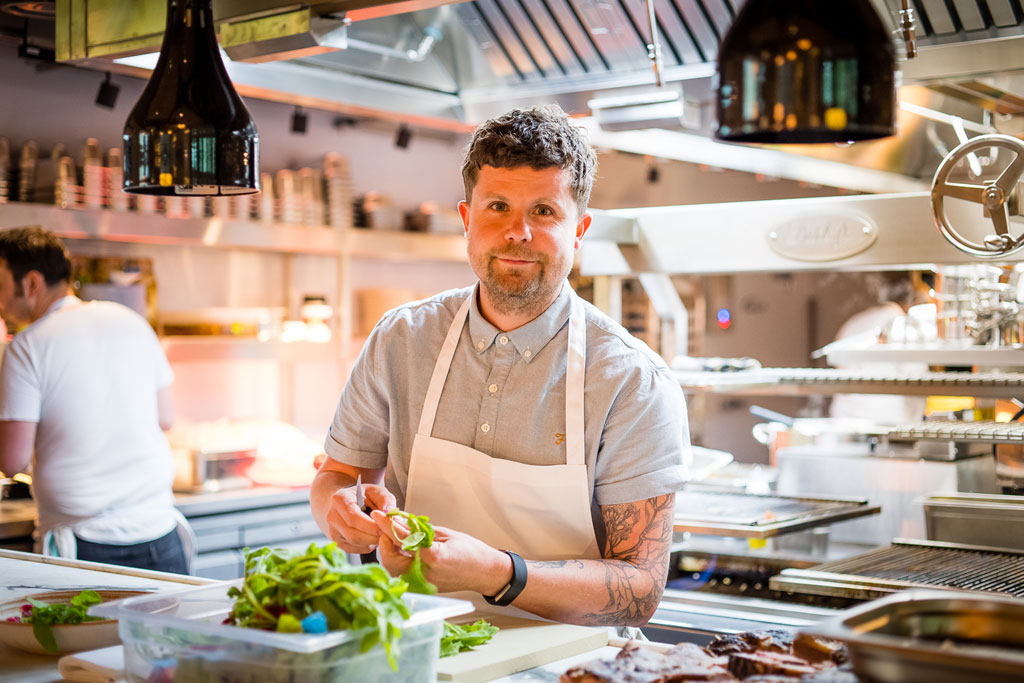A Guide To Fermenting and Pickling with Robin Gill
By
3 years ago
Everything you need to know about food fermentation

It’s official: preserved foods are cool. From kimchee to sauerkraut, kefir to kombucha, fermented foods have become a staple in the modern health foodie’s diet thanks to the plethora of nutritional benefits surrounding them. In short, preserved foods give your body a dose of healthy probiotics, which have a positive effect on gut health – an area which has come under the spotlight in recent years.
With that in mind, renowned chef Robin Gill – who owns a string of London restaurants including The Dairy in Clapham and Darby’s in Battersea – has put together a guide to fermenting and pickling, along with some recipes to try.
Robin Gill’s Guide To Fermenting and Pickling
The basic premise for vegetable and fruit fermentation is to tightly pack or submerge the chosen fruit or vegetable to create an environment where oxygen-dependant mould and organisms cannot grow, thus encouraging and allowing acidifying bacteria to grow instead.
Apart from this basic principle, the actual approach can be varied – the fermentation of fruit and veg is a historical one and therefore methods and approaches have changed and developed over the years. There really is no right and wrong so long as the basic principle is observed.
Here I share how we approach vegetable fermentation in the kitchen at The Dairy but that’s not to say this is the only way to do it. We have changed our own approach over the years by experimenting with the use of different liquids, amounts of salt, methods, storage conditions and timings. Because of this flexibility, vegetable fermentation is a good place to start if you are interested in experimenting with fermenting. It’s easy to get started and the end product can be enjoyed fairly quickly.
Whey
Whey is the liquid that separates from the solid curd as milk curdles. It is, therefore, a by-product of the production of cheese, yoghurts and other curds. The acidity of whey means that it speeds up the fermentation process. We use whey in some of our ferments but it is optional. If you are lucky enough to live near a decent cheese shop or producer, ask them for some and use it in your ferments. As consumers, the bigger the demand we make for something then the more likely it is to come into general circulation. Whey is a useful ingredient but as I’ve said, not completely necessary in when fermenting at home.
Salt and brines
One ingredient that we do rely on in our approach to fermenting is salt. Salt pulls the natural water out of vegetables and creates an environment that restricts the growth of some bacteria, giving lactic acid bacteria a chance to grow. Salt is also a natural preservative, so it’s perfect for use with vegetables to prolong their shelf life. For recipes where the ingredient is finely chopped dry salting is appropriate, but a brine is needed when the ingredient is left whole or chopped into larger pieces. A brine is a mixture of salt and liquid.

GettyImages
Jars, equipment and storage
It’s important to use sterilised jars and equipment and wear clean rubber or plastic gloves when handling the ingredients, to avoid the introduction of any unwanted bacteria. This is especially important during the fermentation process when you’re tasting the ferment to see if it’s ready. It’s best to use a sterilised spoon here (simply dip the spoon into boiling water) and avoid dipping dirty cutlery or hands into the jar.
With regards to storage, again there is no right or wrong. Some people ferment in warm, bright locations; others insist that a cool, dark environment is best. Factors such as warmth will affect the time the fermentation takes. We store our jars at a slightly warm temperature, in a kitchen environment away from direct sunlight.
One question that constantly comes up with regards to fermentation is: how long will it take? This really is a ‘how long is a piece of string’ scenario. One useful tip when it comes to fermenting is to set reminders on your phone to check them. When you have a few ferments on the go then it’s easy to forget what needs to be checked when.
Once the ferment is to your taste and ready to use, it can be moved to the fridge to slow the fermentation process right down. Then it can be stored unopened for up to three months. Once it has been opened it’s recommended that you should use it within one month.

GettyImages
Fermenting Recipes
Fennel Ferment
Ingredients:
- 40g fennel seeds
- 40g black peppercorns
- 30g cumin seeds
- 8g pink peppercorns
- 6 bulbs of fennel
- 300ml fresh apple juice (approximately)
- 300ml whey (approximately, if available)
- Fine table salt
- 4 cloves garlic (sliced)
- 12 star anise
Method:
- Toast the fennel seeds, peppercorns and cumin seeds in a dry pan and grind in a mortar and pestle or spice grinder.
- Trim the fennel bulbs and remove the outer layer. Juice the outer layers and trim along with one whole fennel bulb. Weigh this juice and mix it with an equal amount of apple juice and an equal amount of whey.
- Cut the remaining fennel into 1cm slices.
- Place a 2-litre Kilner jar on a scales and return the scales to zero.
- Add the fennel, the juice and whey mixture and top up with water to cover.
- Add 2% salt to the content of the jar along with the garlic, star anise and ground spices. Close the jar and store at room temperature away from direct sunlight.
- Give the jars a shake each day for the first few days.
- It will take 2-3 weeks to ferment.
- It is ready when the fennel has softened slightly but retains a little bite and has a sour taste. Once ready, the sealed jar can be stored in the fridge for up to 3 months.
- Once opened, use within 1 month.
Carrot and Caraway Pickle
Ingredients:
- 100ml cider vinegar
- 100g caster sugar
- 100ml water
- 20g caraway seeds (toasted)
- 600g mixed heritage carrots (peeled and thinly sliced)
Method:
- Place the vinegar, water, sugar and caraway seeds in a suitably sized pot.
- Bring to the boil, add the carrot slices and remove from the heat immediately.
- Decant into a sterilised jar and seal.
Beer Pickled Onions
Ingredients:
- 300ml strong hoppy beer
- 165ml cider vinegar
- 135g honey
- 1 sprig thyme
- 1.5 bay leaves
- 3g salt
- 18 crushed black peppercorns
- 600g cipollini onions or other small onions (peeled)
Method:
- Add all ingredients except for the onions into a suitable sized pot and bring to the boil.
- Add the onions and simmer until just tender, remove from the heat.
- Decant into sterilised jars and seal.




